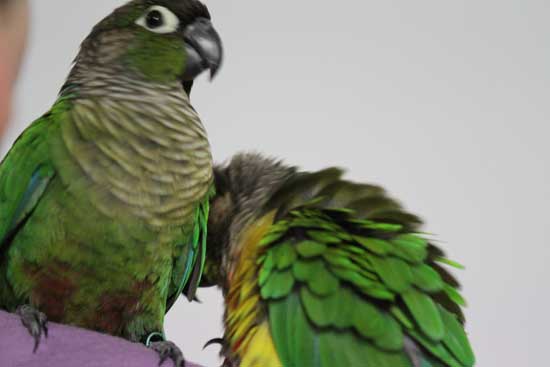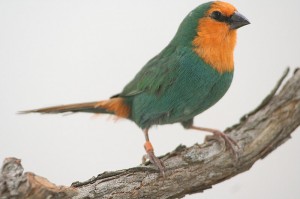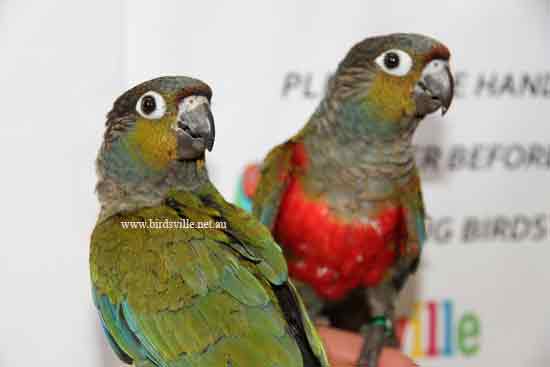Hand Raised Green Cheek Conure Information
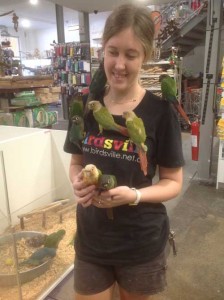
Green Cheeks for sale at birdsville
Green cheeks are seasonal breeders which means they do not breed in the cooler months so they are usually more available in the warmer months if you want to lock in a baby hand raised green cheek conure contact us at birdsville.
The Green Cheek Conure
Originally from South America, your hand raised green cheek conure can live for about 25 years. Conures are mono-morphic which means that it is very hard to visually determine their sex. The best way to verify the sex of your conure would be to have it DNA sexed or surgically sexed, DNA sexing would be the most cost-effective way of determining the gender of your conure. Both sexes make wonderful pets. Often the male will have a slightly larger and flatter top of the head than the female.
Bring a baby Quaker home for the first time.
Assuming you are bringing home a baby Green cheek which has been recently weaned which would be about 8 or 9 weeks old. As the bird has just been weaned its recommended to place a good quality seed- small parrot seed, cockatiel mix or peachface mix and pellets on the floor for the first 2 weeks to give your Green cheek time to learn to eat out of the feeders. Be wary of many supermarket seeds which claim vitamins as this may be low grade and may affect the health of your bird.
If you want your Green cheek to adore you and become super tame give your bird some hand rearing formula at night only that is if your Green cheek is weaned. My Green cheek is 5 years old and still goes crazy for hand rearing formula when I am feeding baby birds. This isn’t necessary but I can’t argue with the results with my birds. For the first 4 weeks give your baby an all you can eat buffet of seed, pellets fruit and veg. After 4 weeks you can change the diet which is much more cost effective for you and beneficial for your Green cheeks long term health this is mentioned below in how to feed adult Green cheeks. This is also the age we recommend you worm your bird usually about 12 to 13 weeks old.
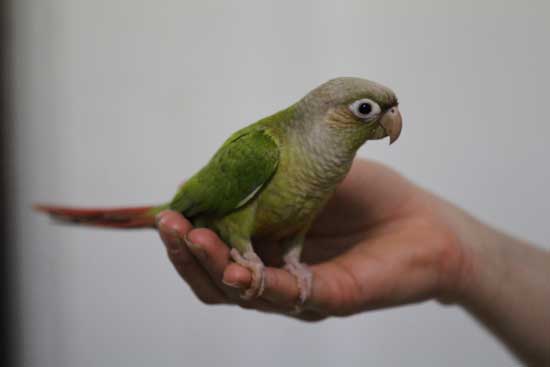
Nature of Hand Raised Green Cheek Conure’s
They love attention and are quite easy to train as long as they are socialised from a young age. Conures do have the ability to talk however it takes a lot of patience and training. These are one of the most quiet of parrot’s available in australian aviculture.
They are very affectionate loving pat’s and attention
Conure’s often grind their beaks as a form of self grooming, this is very common and should not be of much concern, it is also an indication that your bird is feeling relaxed. Many believe the green cheek conure is one of the most quiet birds you can get.
Diet for Tame Green Cheek Conure’s
All our babies are weaned onto seed with a mix of pellets,nuts, and plenty of fresh fruit and veg. A Diet for Baby green cheeks is fed a different way to what we would feed adult birds. Baby birds should be given an all you can eat diet consisting of pellet’s suitable pellets for green cheeks are , Kaytee pellets, Roudy bush pellets, tropimix pellets or vetafarm south american mix. They should also be given seed – small parrot mix, be wary of the seed you use as some seed is a low grade and not as good for your bird. Do not be fooled by fancy packaging as some super market mix has lots of filler seed which the birds simply do not eat. Warning Do not give your green cheek seed with shell grit. Shell grit should not be given to green cheeks.
Pellets– brands mentioned above placed in a separate bowl to seed so you can know exactly what they are eating. Vetafarm south American mix, tropi mix, vetafarm nutriblend, kaytee pellets are some of the pellets I have seen best results with and use for my own green cheeks. I actually change brands every 6 months to vary their diet a bit which works well for me.
Seed– Use a decent mix try avoid Low quality mixes as packaging can be misleading, ask your local bird expert. Mixes which suit Green cheeks well are small parrot mix, cockatiel mix and peachface mix.
The good oil – Available in store packed with Liquid Omega 3 and 6 supplement for not only improving the health of Green cheek conures in general and their eggs it can help with fatty liver disease. Omega 3 and 6 can be deficient in many grains and this can help repair the liver, egg production and immunity. The good oil also contains fat – soluble vitamins including A, D3 and E. Easy to use mix 15ml of the good oil per kg of seed. Let mix stand for at least 4 hours at room temperature before feeding to ensure the oil leaks into the kernel of the seed.
Vitamin supplement– This is not necessary if you feed your bird pellets but if you choose not to feed your bird pellets then it is important to regularly add vitamin supplement in either powder or liquid form to the drinking water of your green cheek.
Fresh fruit and veg – This is essential chop them up into small pieces for the bird to hold and eat about the size of a thumb nail. fruits and veg suitable are orange, apple, sweet potato, corn, bok chou, spinach, green beans, snow peas, rock melon, carrot, capsicum etc
Soaked seed– use cockatoo mix for your sprouted seeds, green cheeks love sprouted seed click here to learn how to sprout seeds safely
Calcium and vitamin D– Do not give Green Cheek Conures shell grit as it can effect there crop but instead supply them with a mineral bell or calcium additive to the water. These tropical birds must receive vitamin d in order to obsorb calcium so if they do not receive natural sunlight there is calcium supplements with vitamin d available at birdsville. Vitamin d does not work through glass.
Feeding adult green cheeks or birds 4 to 7 months of age should have a similar but slightly different way of feeding them. In addition to the fruit and veg your bird should have 2 separate bowls for seed and pellets. Fill one bowl up with seed and the other with pellets. This is a technique i use for my birds that i breed with they look amazing. Why? Not only is this the most cost effective way for the owner of the bird but the bird gets a varied diet and eats everything they should. The biggest trap green cheek owners fall into is they fill the seed up the bird gorges on sun flower seed and they wont touch anything else until they re plenish the bowl with more seed. This is what i come accross owners doing on a daily basis. This is wrong instead of throwing away good seed and pellets just leave it there!. Your bird will eat all the healthy low in fat seeds besides the sun flower seed. Then you will see the pellets provided start to disappear. Be strong your bird will play you like a fiddle to get those delicious sun flower seeds. This Diet will be great for your bird as its a good varied diet and you can not go wrong.
Debate between seed and Pellets for my bird?
Some Vets and breeders are against pellets and Others are against seed. My stance on this subject is and has worked great with my birds is provide both in the method mentioned above. This is how i feed my private collection of parrots as i believe variety. Birds naturally eat seed in the wild and it is a good foraging behaviour for the bird to simply eat seeds but also pellets have lots of good nutrition in them as well. Pellets are cooked but also act as a multi vitamin which is added, seed has a lot of natural nutrience and vitamins so between them both and some fruit and veg every couple of days your bird should be glowing.
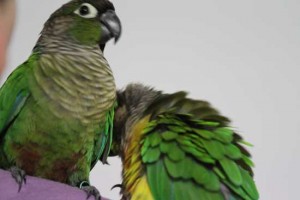
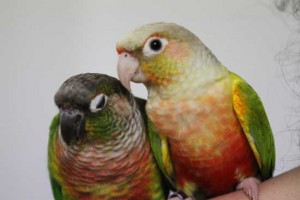
This Pineapple green cheek is a mutation of the normal green cheek pictured above.
Cages for Green Cheek Conure’s
Remember that these are an inteligent parrot and need lots toys as well as there feed dishes to keep them happy so they should be kept in a cage any smaller than 18 by 18 inches. The bigger the cage the better and happier your bird will be.
Toys– They should have a variety of toys and these should be rotated weekly to stop your bird becoming bored. This will be beneficial in the process of taming your parrot as it lowers aggression. Swings are great as they allow your pet green cheek a form of exercise as well as fun and ladders are also usefull for moving around the cage. We recommend a minimum of 4 toys in every cage with some spares to rotate.
Worming – Green cheeks should be wormed every 3 months for outside birds and every 6 months for inside birds.
Lite and mice Spray– This should be done every 3 months for birds weather they are inside or outside. Issues with mites and lice occur indoors as well as outside.
Bird Training for Green Cheeks click here.
